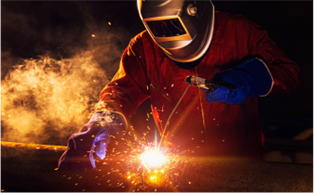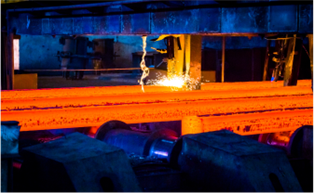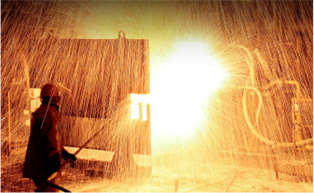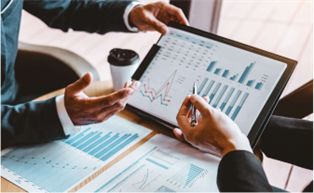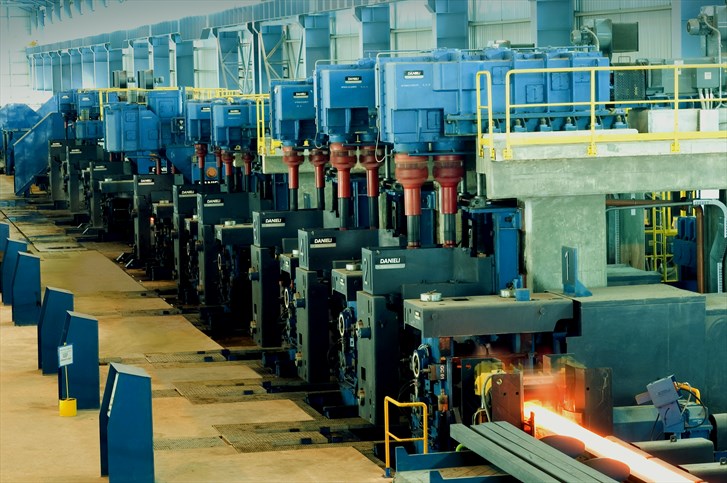Financial support needed for steel firms to go green: expert
Vietnam should sketch out specific policies to provide financial support to motivate steel enterprises to invest in new green technologies, Deputy General Director of the Vietnam Steel Corporation and Vice Chairman of the Vietnam Steel Association (VSA) Pham Cong Thao said in an interview with VietnamPlus e-newspaper.
12/10/2023 12:10
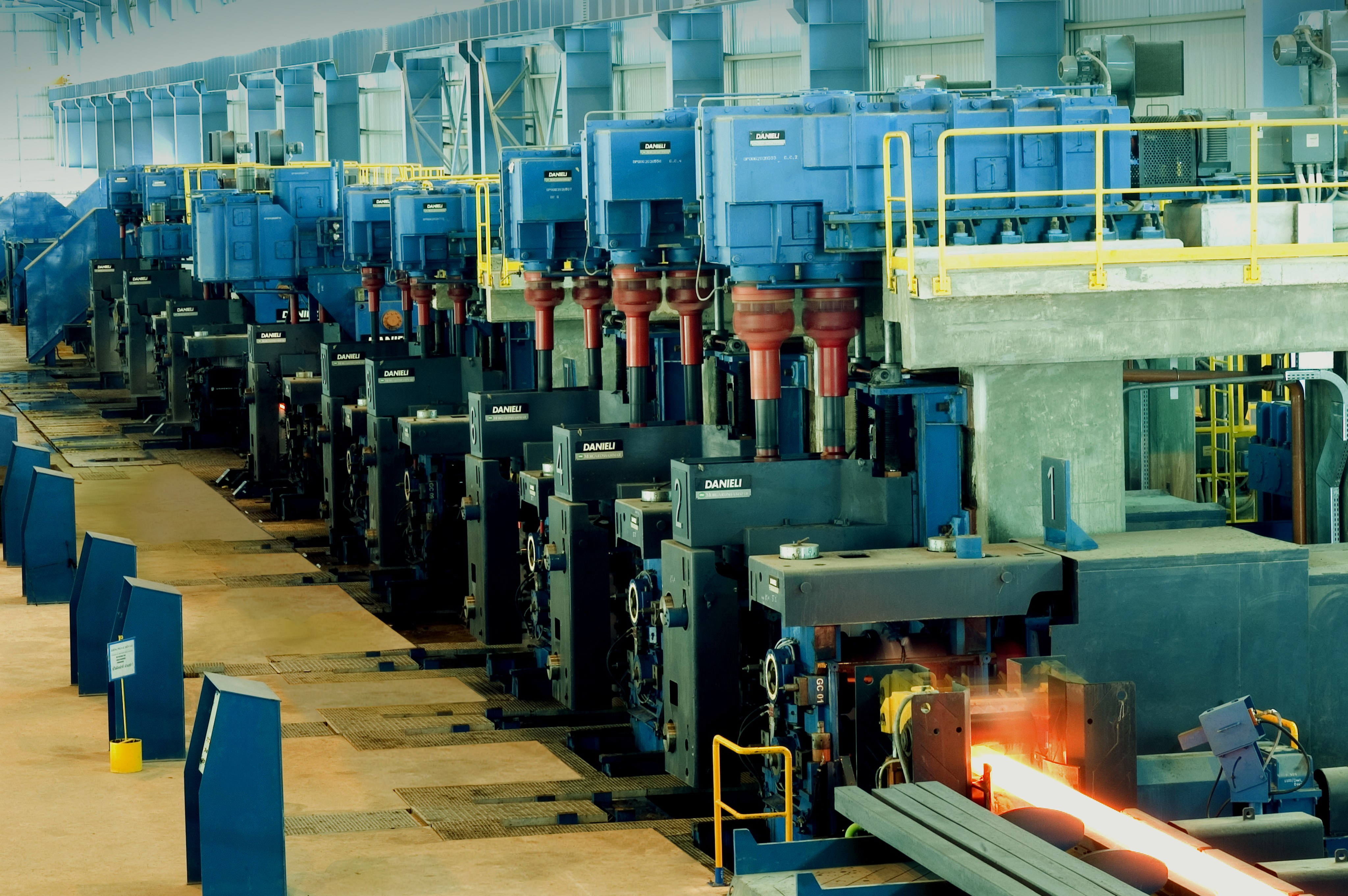 Steel enterprises should invest in new green technologies. (Photo: VNSTEEL)
Steel enterprises should invest in new green technologies. (Photo: VNSTEEL)
Hanoi (VNA) – Vietnam should sketch out specific policies to provide financial support to motivate steel enterprises to invest in new green technologies, Deputy General Director of the Vietnam Steel Corporation and Vice Chairman of the Vietnam Steel Association (VSA) Pham Cong Thao said in an interview with VietnamPlus e-newspaper.
Steel industry under rising pressure to go green
Reporter: How have green transition, the circular economy, and most recently the EU’s carbon border adjustment mechanism (CBAM) affected Vietnamese steel enterprises?
Mr Pham Cong Thao: The Vietnamese Government’s strong commitment to green transition and net-zero emissions by 2050 will exert pressure on several sectors with a colossal carbon footprint such as steel, cement and chemicals.
According to the green transition roadmap, Vietnam has nearly 30 years to make a change. However, the deadline may come earlier as there is a high possibility that developed countries will go faster and set stricter requirements for their imported products.
Let me take the EU as an example. Its CBAM is a trade barrier for the bloc’s imports. To be more specific, from October 1, 2023 to January 31, 2024, quarterly reporting of the greenhouse gas footprint of certain imported products is required. Purchase of CBAM certificates for importers is required from 2026. If Vietnamese exporters fail to make timely declarations, their shipments to the market will be affected.
The EU will fully operate the CBAM from 2034, which means the financial impact of the CBAM will gradually increase. Higher taxes will be levied on enterprises with larger emissions.
The Vietnamese steel industry will be affected by the mechanism as 25% of its steel volume is exported to the EU, while nearly 10% goes to the US, which will develop a policy similar to that of the EU.
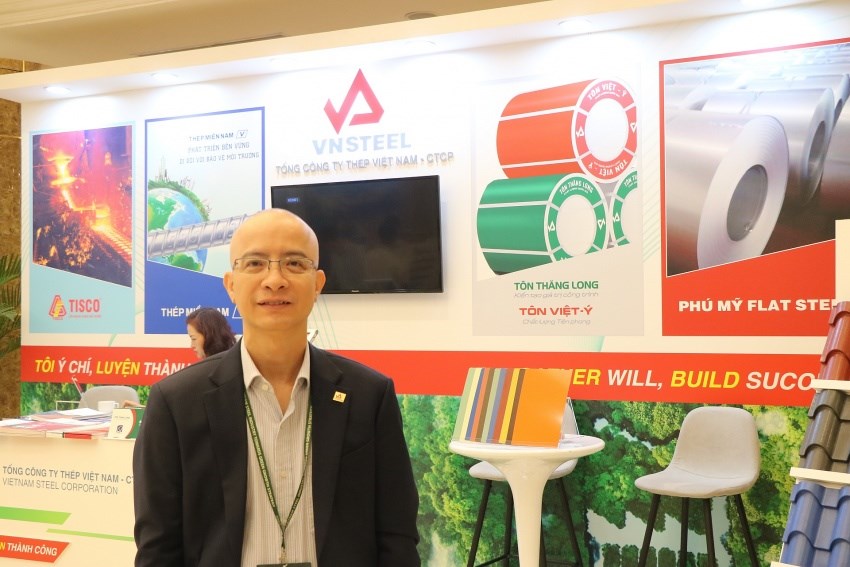 Deputy General Director of the Vietnam Steel Corporation and Vice Chairman of the Vietnam Steel Association (VSA) Pham Cong Thao (Photo: VNSTEEL)
Deputy General Director of the Vietnam Steel Corporation and Vice Chairman of the Vietnam Steel Association (VSA) Pham Cong Thao (Photo: VNSTEEL)
Steel firms will face formidable challenges as they try to bolster exports amidst falling demand in the domestic market.
The industry is expected to sell more than 19 million tonnes of steel in 2023, as compared to 24 million tonnes in 2019 – the time before the COVID-19 broke out.
Additionally, steel companies face a downturn in the stock market as their stocks fall in price.
Those challenges force steel firms to adapt.
Reporter: How have steel companies prepared to embrace for the EU’s CBAM so far?
Mr. Pham Cong Thao: The VSA has held an array of workshops to popularse the Government and the EU’s policies on decarboniation.
At a recent workshop on green development in September, the VSA and the International Finance Corporation (IFC) organised a training course on Greenhouse Gas Accounting and Emissions Mitigation for steel firms so that they could gain an insight into emission measurement.
However, we did not calculate the total emission amount of the industry. While the EU requires us to hand in the figure until January 31, enterprises are in the preparation process.
Reporter: What are the advantages and disadvantages of the steel industry to go green?
Mr. Pham Cong Thao: Challenges come from technologies and costs, including investment, product prices, and ability to compete in the international market.
The blast furnace and the electric arc furnace are the main steel production technologies. With traditional technology – the blast furnace – enterprises can create steel products at competitive costs and sell them at competitive prices. Several enterprises such as Formosa and Hoa Phat have invested big in this technology. However, the use of coke in blast furnace steelmaking is a major source of carbon dioxide emissions.
In stark contrast, the electric arc furnace steelmaking produces less emissions, but results in higher production costs.
With a view to phasing out carbon dioxide emissions into the environment, it is necessary to replace fossil fuels and liquidefied natural gas (LNG) with green materials. These include wind power, solar power and green hydrogen, or develop measures to capture and bury carbon dioxide.
The application of green technologies into steel production requires time and massive investment.
Policies needed to encourage steel firms to invest in new technologies
Reporter: What are your recommendations for authorities to support enterprises so that they are able to fulfill stringent standards on emissions and realise the Government’s set targets?
Mr. Pham Cong Thao: Green transition is a challenging and complicated process that requires rational steps.
The VSA must study to put forward a suitable transition progress based on the Government’s orientations for industry, as well as requirements from the importers.
As a young industry, the Vietnamese steel sector purchases foreign production technologies. While Vietnam’s research ability is still limited, foreign enterprises like those from China and the Republic of Korea are capable of developing new technologies to cut carbon dioxide emissions. Therefore, the association hopes that the Government will assist steel enterprises in green technology R&D.
In case the R&D is not possible, we can study to apply foreign technologies. However, it should be carried out at the right time, and in accordance with demand and payment ability.
It is costly to invest in new environmental technologies. Therefore, the State should work out specific policies to encourage and provide financial support for steel enterprises.
Besides, green energy should be put at the centre of the country’s development policy.
Vietnam ranked 13th in the world in terms of steel production output. (Photo: VietnamPlus)
Reporter: Anti-dumping is another major issue for steel firms. How would you evaluate their preparation?
Mr. Pham Cong Thao: Protectionism is increasing all over the world. Even the EU’s CBAM has become controversial in terms of free trade. It lays global environmental standards. However, it is a protection tool that the bloc wants to develop.
Foreign countries have enhanced anti-dumping measures against Vietnamese steel.
To date, the US has not recognised Vietnam as a market economy yet. Therefore, the US sides use statistics from a third party while reviewing its anti-dumping measures against Vietnamese goods, which may be a disadvantage for Vietnam.
When Vietnam gains the US’s recognition, other countries will facilitate Vietnam’s trade activities.
Vietnamese firms should capitalise on support form their importers so that their goverments will reduce anti-dumping policies on Vietnamese goods.
Besides, they must join hands with the VSA and the Trade Remedies Authority of Vietnam under the Ministry of Industry and Trade to provide statistics and offer an explanation for those who initiate anti-dumpting investigations.
They should well prepare response measures as well.
Reporter: Thank you for the interview!
VNA (en.vietnamplus.vn)


